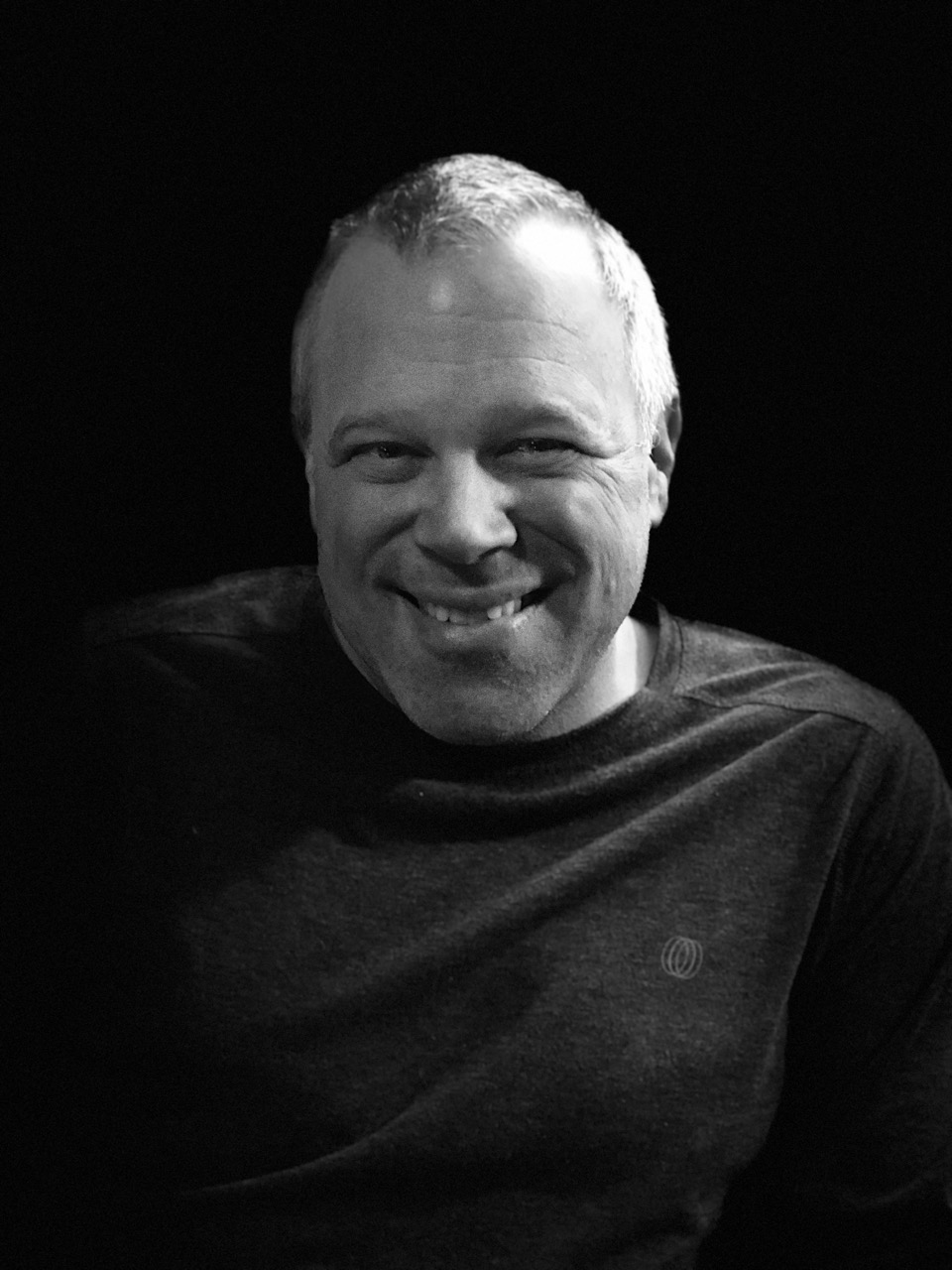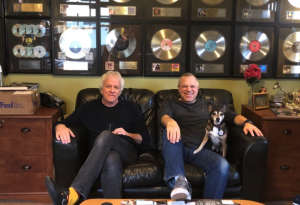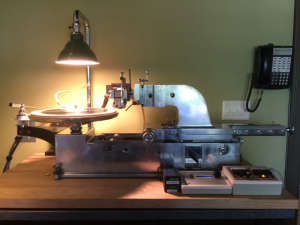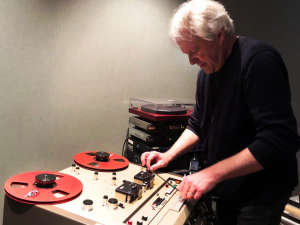
Mastering Studio Insight: An Interview with Eric Conn of Independent Mastering
Working together with Eric on upgrading his Scully Disk mastering system, we grabbed the chance to give our readers a little peek into the head of an experienced mastering engineer. Eric Conn works together with Don Cobb and a small Dog called Chaco at Independent Mastering in Nashville, Tennessee.

Agnew Analog: What or who influenced you to decide to cut records professionally?
Eric: I got my start in the record business at Sheffield Lab, the audiophile record label, sister company to The Mastering Lab owned by Doug Sax and Lincoln Mayorga. At the time I was introduced to the company, Sheffield was doing a recording of a choir. I knew the director and was asked to help with some of the logistics; this included driving the director to the Mastering Lab for the mastering session. Doug changed the head stack on the 1/2” playback deck and the sound changed — it went from sounding really good to stunningly beautiful. This was the early 1990’s and they had stopped doing “Direct to Disk”, but were still doing “Live to 2-Track” on location or in the studio.
I decided then and there that’s what I wanted to do.
I annoyed them for about 6 months and finally got a job at Sheffield. I got to be a fly on the wall in the studio and label tape boxes, run cables, etc. on a couple of sessions — but my main job was being in charge of getting everything done after the recording was complete. Everything from mastering to manufacturing, including coordinating all the artwork, insert and jacket printing, and working with the sales team to make sure they had everything they needed. This was for their CD and Vinyl product. It was an great introduction to the music industry… to see both the good and the bad sides.
AA: How did you learn the "black art”?
Eric: I’m still learning it. Every single record is different, every project brings something new and there’s always something to learn! Maybe that’s why it’s black? Gray, at least. I would say the hardest thing about mastering is knowing when a project needs nothing. We don’t have a signature sound, and that’s by design. If you like what you have, we don’t need to change it. If you want it to change, then we can also do that with your input. Most of our work is approved on the first reference, and that’s due to good and positive communication on the front end.

AA: Is there an interesting story behind your Scully lathe? Tell us!
Eric: This 501 Scully is serial number 336, and every single part of the lathe has the serial number stamped in it. Even the pins pressed into the aluminum to hold the manual feed handle have “336" on them. Take apart the sled arm, 336 is stamped inside. Amazing. The "bathtub", sled, and platter came from New Jersey. It arrived in July 2014 and we started the mechanical and cosmetic restoration. It had no turntable drive motor, no platter bearing, no pitch/depth system, and no electronics. From what I’ve been told, the serial number and the type of platter date it to the early 1940’s.
I picked up a new old stock Westrex 3DII cutting head from History of Recorded Sound, found some Westrex cutting electronics in Florida with a Haeco (Westrex) head, and had HRS modify/rebuild them.
I’m neither a mechanical nor an electrical engineer, I’m a music major! But, I’m curious and I’m tenacious. The platter bearing and shaft was probably the hardest thing to create; I tracked down some original part numbers and found the original bearing manufacturer, then cross-referenced the specs to find an equivalent modern bearing for the solution. The mechanics are really interesting — the bearing has to support radial (from the side) and axial (from the end) loads, which means not any old bearing will do.
All of this language and knowledge I had to learn. With the help of some friends at a local machine shop, I was able to create a turntable drive system that works really well. The system is belt drive; the motor is A.C. synchronous, and driven by it’s own crystal controlled digital power supply that re-shapes the 60Hz A.C. wave coming in from our house power. It’s very stable, and the motor control is synced to a tachometer which can adjust speed based on a sensor on the platter. I’ve got a nice and stable 33.3333 RPM that self adjusts as necessary.
AA: Do you ever get asked to teach others how to cut record?
Eric: Sometimes clients or friends hang out while cutting, but, actually, no.
AA: We've all heard great sounding records, mediocre ones, as well as some that are almost unlistenable records. What makes all the difference?
Eric: The original recording. I’ve heard horrible sounding 1/2” tape and great sounding 16 bit DATs. But my opinion is, it is the original recording that has the magic in it. Maybe you can bring things out with some EQ here and there, fuss with the mix or some processing; but if it’s not there to begin with, nobody is going to put it there. But I’m talking about a recording, something that originates as an acoustic source — the acoustic source could be an electric guitar, a voice, a string quartet, whatever. Computer generated music can sound wonderful with it's elaborate textures and cool samples too. But those samples had to be recorded. And to sound good, they had to be recorded well. See what I mean? It’s the source that counts.

AA: What do you use for monitoring?
Eric: We have a set of custom Steve Durr designed soffit mounted speakers that we’ve been listening to for 15 years. They are 2-way with a passive crossover, each box has two 15” speakers and a 2” TAD driver. They’re powered by Bryston amps for the low frequency drivers, and a McIntosh for the high frequency. I think we’re powering the system with about 1,750 Watts.
AA: Do your customers attend cutting sessions, or do you prefer to work in privacy?
Eric: We hardly have any attended sessions these days. By the time most of our clients are ready for mastering, they’re already out on the road promoting the new record. Plus, and please forgive me, mastering is boring. Not for me, but for most people it’s not very exciting.
Mastering is not a very glamorous job, which for me is why it’s attractive. I don’t know why they have these classes and why there’s such an interest in it lately — traditionally, you started in mastering to understand the record format and then moved up to the recording or mix room as fast as you could. If I do have attended sessions, it can sometimes be very helpful to have the input from the client.
AA: Do you think the vinyl record will survive as a medium in the long run, or is it just a trend that will eventually die out?
Eric: Unfortunately, I am not an oracle. I think that as long as people are having fun with the format, it will continue to be one of several ways for people to enjoy music. The fans, the listeners, they’re the ones driving the resurgence of the vinyl record business.
AA: Unlike most industrial manufacturing processes nowadays, disk mastering is still a manual time and skill intensive operation. Will the complete automation of the disk mastering process ever be possible, and if so, would this be a development you would welcome?
Eric: If I were to guess, someone will come up with a way to either create the finished vinyl product or the master/stamper via 3D modelling, direct from a digital source file. That doesn’t help the people who like to mix to tape, but, lets be real: most music is cut, mixed, mastered, and assembled in the digital world. Some systems have full automation now: automatic head lift/drop, spirals made from midi triggers, etc. On some systems, as long as the swarf picks up, there’s nothing to do.
I was talking to someone over the summer who cuts a lot of duplicate lacquers; he puts on a side, hits start on the playback computer, and goes into his garden for 20 minutes to sit in the sun. When he comes back the head is up, the turn table, stylus heat, and vacuum are off, and he puts on the next lacquer. Then it’s back to the garden for more sunshine. He’s automated the whole thing. Yes, I’d welcome it. Consistency is good, repeatability is good. It doesn’t take away from any knowledge or skill, it enhances it.

AA: Do you have any advice for people thinking of starting out in the world of record cutting?
Eric: I have been in the music industry for 25 years, full time in a mastering studio for 21, and the last 17 years at my own company, Independent Mastering. My opinion is, the record industry today is harder than ever. A few at the top make some real money, there are some spaces in the middle to make a living, but in my opinion, the majority of the people in music production have other jobs to support the habit. This is true for almost everyone on the creative side. From artists to musicians to the people interested in engineering and production, it’s very difficult.
Please know that I’m not discouraging anyone: I fully support following your passion, your dreams, and making a living in the artistic community — but be careful what you wish for. Yes, you can do it and you can make a living, but there may be unforeseen financial and personal costs. But, you don’t know until you try, so jump in. Do it! Find out for yourself.
Education is important. I can’t emphasize that enough. The number one thing that education should do is teach you how to educate yourself when the time comes. That’s what it’s for — so, get your education in school, or out in the world, whatever fits best. Learn how to write well, how to speak well, learn some math and science, computers, psychology, learn to work with people. Be well rounded enough to hold a meaningful conversation with a gardener or a senator. THEN you have something to offer the world wherever you find yourself, and music can be a part of that, or all of it, your choice. The point being: you have a choice, you have options.
That is my advice. Whatever it is you want to do, get an education well rounded in art, science, humanities, and educate yourself enough so you know how to look under the right rocks for the answers you need. Answers to the questions that interest you. The answers might not come from a single source — they might come from multiple sources, and some sources are better than others.
Seek out the places and people that resonate with you. There is where success lies. Do something you like, with people you like, in a place you like to be. If you land all three of those things I think you’ll be beyond successful.
AA: Many thanks for the interview!
